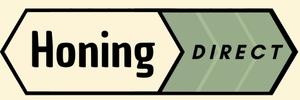6 things you need to know about hay fever
Contents:
• What is hay fever?
• What are the signs or symptoms of hay fever?
• How do you get hay fever?
• Hay fever in children?
• What is a pollen calendar?
What is hay fever?
Hay fever - sometimes called rhinintis - is an allergic reaction to environmental allergens such as bee pollen , house dust mites, mold and even animal hair. More than two million people in the Netherlands suffer from it and that number is only increasing. What many people don't know is that there are two types of hay fever.Seasonal hay fever - This type of hay fever is usually caused by pollen and changes from season to season depending on which plants are in bloom. Most people have a worse allergy in the spring when most pollen is blown around in the air.
Permanent hay fever - This type of hay fever occurs all year round. The cause is often dust or mold indoors that triggers allergic reactions.
What are the signs or symptoms of hay fever?
Most people are familiar with the most common allergy symptoms of hay fever, but having hay fever can trigger even worse reactions. Some of them can cause serious health problems. Here is an overview of the most common hay fever symptoms:- Coughing and sneezing
- chest tightness
- Itching in the eyes, nose, mouth, or throat
- Runny or stuffy nose
- Swollen eyelids
- Memory problems
- Concentration difficulties
- Irritable mood
- Tiredness or trouble sleeping
How do you get hay fever?
When these pollen float through the air and come into contact with the nose, mouth or eyes of a person with an allergy, the body's immune system can react as if it were a harmful invader and release histamine. This can lead to symptoms such as sneezing, runny nose, stuffy nose, itchy and watery eyes, and sometimes fatigue and headaches.Hay fever can also be caused by mold spores and dust mites, although this is less common than pollen allergies. In some cases, hay fever can also be hereditary, meaning people are more likely to develop the condition if it runs in their family.
It is important to note that hay fever cannot be passed from person to person.
Hay fever in children
Several treatments are available to help reduce the symptoms of hay fever in children, including nasal sprays, antihistamines, and immunotherapy. It is important to start treatment before pollen season starts to reduce symptoms. In addition, there are also some practical measures that can be taken, such as avoiding exposure to pollen and cleaning the home regularly. It is important to consult a doctor before starting any treatment for hay fever in children.What is a pollen calendar?
A pollen calendar is a useful tool for people with hay fever to determine what pollen is in the air at any given time and when their symptoms are likely to be the worst. A pollen calendar shows the peak periods of different types of pollen during the year, depending on the flowering season of different plants. Consulting a pollen calendar can help people with hay fever plan their activities and prepare for possible symptoms. It is also a useful tool for doctors to aid in the diagnosis and treatment of hay fever. Several organizations and websites offer pollen calendars, which can vary depending on location and the specific plant species in a particular area.Do you want to help me with my passion for beekeeping? Then share this with friends, family and acquaintances!










Leave a comment
Please note, comments need to be approved before they are published.